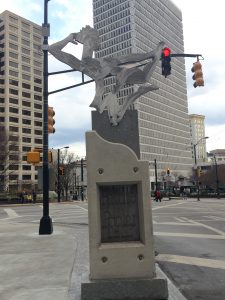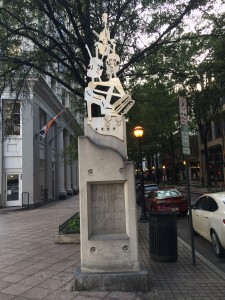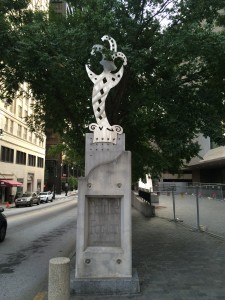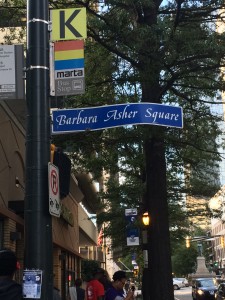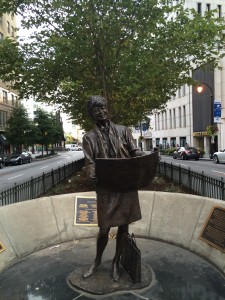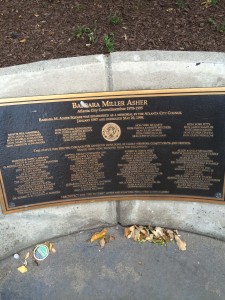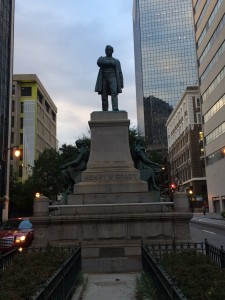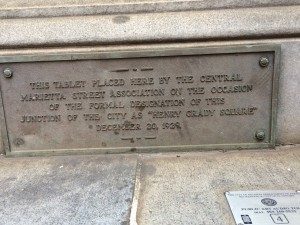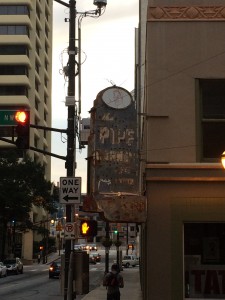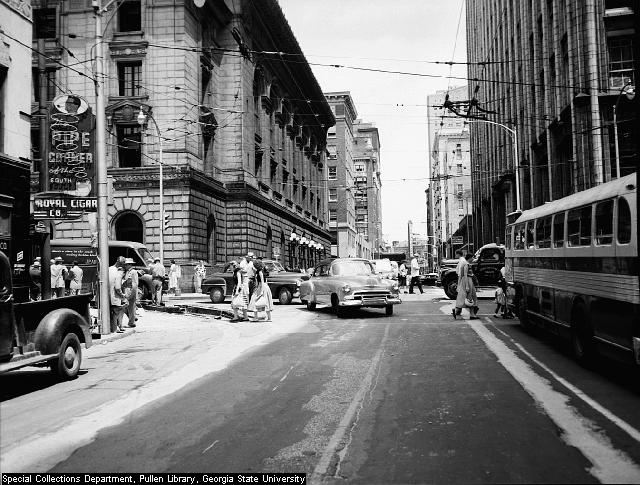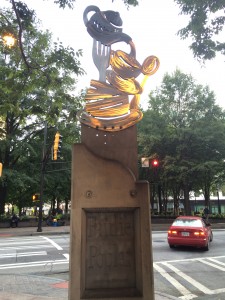
If you’ve ever made the trek to Aderhold, you might have stumbled upon a gem without even realizing it. Nestled into the northwestern edge of Georgia State’s campus, were it not for the eclectic signs proclaiming, “Fairlie-Poplar Historic District,” I might have overlooked it myself. Once lauded as Atlanta’s “fire-proof” business district, the area is densely populated with historic office buildings and is the site of many former hotels. It is located between the Peachtree Center and Five Points Marta stations, making the former business hub extremely accessible by public transportation. On an autumn day, the district hums with a gentle sort of life as the wind sweeps past re-purposed buildings, offices, and restaurants.
Although the border is contested, the district is officially bounded by Peachtree, Luckie, Cone, and Marietta Streets, but stretches a bit further in each cardinal direction. The internal streets include Fairlie, Poplar, Walton, and Broad Streets.
Once a hub of business and commerce, the district has condominiums for rent, several restaurants, and even Georgia State classroom buildings. The area is a seamless blend of old and new–a number of old buildings have been adapted for reuse, including the Flat Iron building, one of the first “skyscrapers” in the city of Atlanta. The construction of buildings like these signaled a shift in construction. Instead of wood, the buildings were made of steel and concrete, making them “fireproof.” Although very strong, many were skeptical of the new building material. In an attempt to reassure businesses and encourage them to use new office spaces, features with no use, like steel “reinforcement” beams were added to buildings, and remnants of these can be seen around Fairlie-Poplar. The Helen Aderhold Learning Center, one of Georgia State’s classroom buildings, although constructed in the 2000s, is located across from the Flat Iron Building and imitates the concrete and steel style of the surrounding buildings, blending in with ease.
The streets, constructed for foot and horse drawn carriage traffic, are narrow. While I was walking, I encountered such traffic in front of the Healey building, a lovely office building that has since been re-purposed as condominiums.
The district is also home to a number of memorials for city figures, such as Henry Grady, whose statue sits in the middle of the Marietta Street Island, Margret Mitchel, whose dedicated square sits just outside the official boundary of the district, and Barbara Asher, who also has a statue and square dedicated to her. It is clear Fairlie-Poplar has made an effort to maintain city culture. Outside the Candler Building at the corner of Peachtree and Williams Streets, I witnessed a protest, which, in my opinion, is a testament to the lively cultural diversity of both Atlanta and this district.
